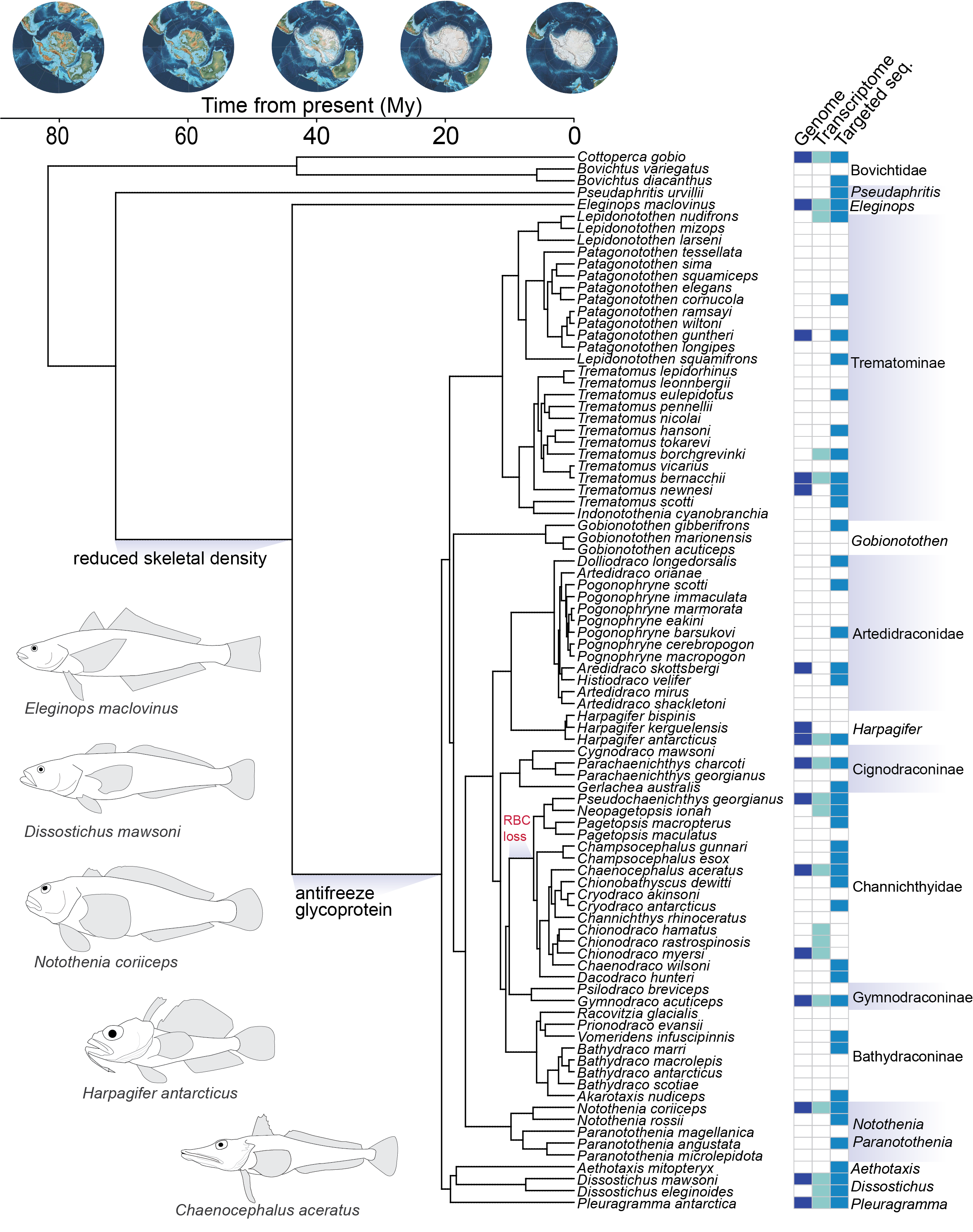Antarctic notothenioid fishes are the classic example of vertebrate adaptive radiation in a marine environment. Notothenioids diversified from a single common ancestor ∼22 Mya to between 120 and 140 species today, and they represent ∼90% of fish biomass on the continental shelf of Antarctica. As they diversified in the cold Southern Ocean, notothenioids evolved numerous traits, including osteopenia, anemia, cardiomegaly, dyslipidemia, and aglomerular kidneys, that are beneficial or tolerated in their environment but are pathological in humans. Thus, notothenioids are models for understanding adaptive radiations, physiological and biochemical adaptations to extreme environments, and genetic mechanisms of human disease. Since 2014, 16 notothenioid genomes have been published, which enable a first-pass holistic analysis of the notothenioid radiation and the genetic underpinnings of novel notothenioid traits. Here, we review the notothenioid radiation from a genomic perspective and integrate our insights with recent observations from other fish radiations.

Adaptations and Diversity of Antarctic Fishes- A Genomic Perspective
Daane JM, Detrich HW III.
2022.
Annual Review of Animal Biosciences 10:39-62